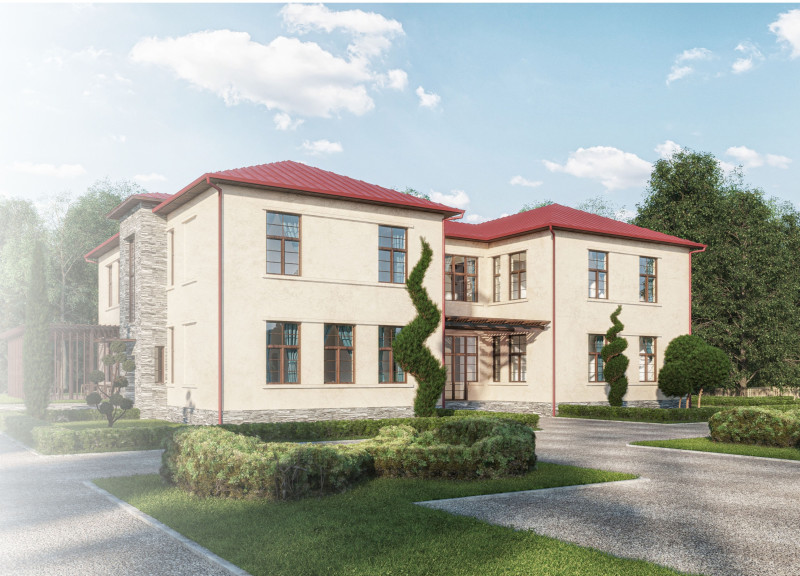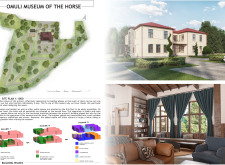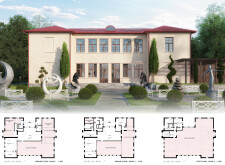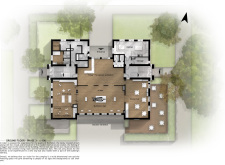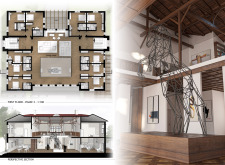5 key facts about this project
The OMULI MUSEUM OF THE HORSE is a well-conceived design that integrates both museum and hotel functions. Set in a location that aims to foster community interaction, it combines cultural and hospitality elements through a carefully organized layout. The design focuses on creating spaces that are accessible and efficient, with a clear distinction between public and private areas, enhancing the experience for all visitors.
Functional Organization
On the first floor, the museum, studios, and public spaces create an easy path for visitors. These spaces are designed for straightforward access, ensuring a welcoming environment. Meanwhile, the hotel and its amenities are located on the second floor, creating a clear separation between public activities and private areas. This setup allows each part to function independently, catering to the needs of different users without interference.
Integration of Outdoor Space
The transformed outdoor area features a park that hosts temporary exhibitions and events. This design encourages a blend of nature and culture, offering a unique experience for visitors. By incorporating such outdoor spaces, the project promotes community involvement, linking leisure activities with the cultural offerings of the museum.
Phased Development
The construction is organized into three phases. The early phases focus on areas that remain undeveloped, while the final phase introduces key facilities such as exhibition spaces, artist workshops, dining venues, and guest accommodations. This phased approach ensures that each element contributes progressively to the overall vision, promoting a sense of unity across all components.
Central Atrium Feature
A central atrium links the common areas with exhibition spaces. This feature fosters a sense of openness, inviting movement and interaction among visitors. The newly renovated wooden roof structure enhances the spacious feel, creating a pleasant atmosphere that serves the varied functions of the museum and its surroundings.
The design allows for flexibility, presenting opportunities for diverse material choices that align with contemporary architectural practices. This focus on clear spatial organization and user-friendly experiences positions the OMULI MUSEUM OF THE HORSE as a meaningful addition to the architectural landscape.


